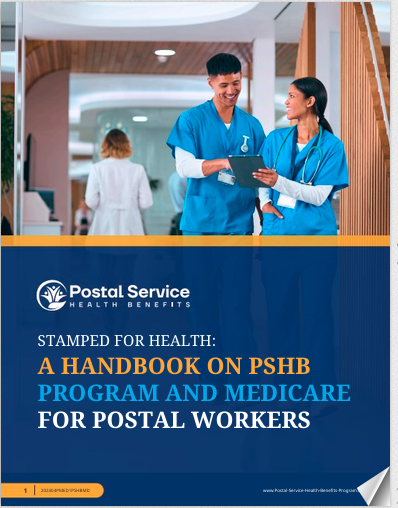Key Takeaways
-
Missing Medicare enrollment deadlines can lead to coverage gaps, late penalties, or the loss of Postal Service Health Benefits (PSHB) drug coverage.
-
Understanding how the Medicare timeline aligns with PSHB requirements can help you plan your transition into retirement with no unwanted surprises.
Why Timing Matters More Than You Think
When you approach Medicare eligibility, it’s easy to assume it will all fall into place. But if you’re a Postal Service retiree or an annuitant, there are new rules under the PSHB program that change how you need to think about timelines, particularly when it comes to enrolling in Medicare Part B. Overlooking even a single deadline can affect your entire healthcare strategy—from monthly costs to access to drug benefits.
In 2025, these deadlines have real consequences, especially now that Medicare enrollment is closely tied to maintaining your PSHB coverage. This article lays out what you need to know, month-by-month and year-by-year, so that you don’t find yourself caught off guard.
Who Needs to Worry About the Timeline?
Not everyone under PSHB is subject to the same requirements. You need to pay attention to Medicare timelines if:
-
You are a Postal Service annuitant eligible for Medicare Part A (typically at age 65).
-
You have family members covered under your PSHB plan who are eligible for Medicare.
-
You retired after January 1, 2025, or are still employed but turn 65 in or after 2025.
If you fall into any of these groups, you are subject to the Medicare Part B enrollment requirement in order to keep full PSHB benefits, including drug coverage.
Those exempt include:
-
Annuitants who retired on or before January 1, 2025.
-
Current employees who were 64 or older as of January 1, 2025.
-
Those living abroad or covered by VA or Indian Health Services.
The Timeline Breakdown
Understanding when you need to take action depends on where you are in your Medicare journey. Here is the complete timeline broken down by phases.
1. 6 to 12 Months Before Turning 65
This is when planning starts. You should:
-
Check if you’re eligible for premium-free Medicare Part A.
-
Confirm that your retirement date or current employment status will trigger the PSHB Part B requirement.
-
Start gathering documents needed for enrollment (e.g., proof of age, employment history).
-
Log in to your MyMedicare.gov account or create one if you haven’t already.
2. 3 Months Before Turning 65
This marks the beginning of your Initial Enrollment Period (IEP). It lasts for 7 months in total:
-
3 months before your 65th birthday
-
The month of your 65th birthday
-
3 months after your 65th birthday
To avoid penalties and PSHB coverage loss, you should:
-
Enroll in both Medicare Part A and Part B within the first 3 months of this window.
-
Notify your PSHB plan of your Medicare enrollment.
-
Verify that your PSHB drug coverage will stay intact.
Failing to enroll in Part B during this window could result in a late enrollment penalty and lead to the automatic loss of Part D-equivalent drug coverage from your PSHB plan.
3. Month of Your 65th Birthday
If you haven’t enrolled by now, your Medicare coverage won’t start until the following month or later.
-
You can still enroll in Part B during this month, but coverage delays may occur.
-
It’s your last chance to enroll without impacting your PSHB eligibility if you haven’t done so in the 3 months before.
4. 1 to 3 Months After Turning 65
You’re still within your IEP, but any delay now affects the timing of your Medicare coverage.
-
Enrolling during these final 3 months causes a 1-3 month delay in the start date of your Medicare Part B coverage.
-
That delay can leave you exposed—you may not be eligible for full PSHB benefits if Medicare Part B isn’t in place.
5. Missing the IEP Entirely? Know the GEP
If you miss your entire Initial Enrollment Period, you’ll have to wait until the General Enrollment Period (GEP) from January 1 to March 31.
-
Coverage then begins July 1.
-
You’ll face a Part B late enrollment penalty of 10% per 12-month period you were eligible but not enrolled.
-
More critically, PSHB drug coverage may end until you are properly enrolled.
6. Already Covered Under FEHB Before 2025?
If you were enrolled in FEHB before transitioning to PSHB and you delayed Medicare Part B due to active employment, you may qualify for a Special Enrollment Period (SEP):
-
It begins when your employment or employer coverage ends.
-
You have 8 months from that date to enroll in Medicare Part B without penalty.
This SEP can save you from a penalty, but in 2025, you must still coordinate with your PSHB plan to avoid losing benefits. Failure to act within this SEP window will have the same consequences as missing your IEP.
Drug Coverage Warning: The PSHB Medicare Link
One of the most critical changes under PSHB in 2025 is that drug coverage is now integrated with Medicare Part D through an Employer Group Waiver Plan (EGWP). You only remain eligible for this drug coverage if:
-
You are enrolled in Medicare Part B.
-
You do not opt out of the Medicare Part D plan tied to your PSHB coverage.
If you decline or disenroll from Part B, your drug benefits will be removed from your PSHB plan—even if you are still technically enrolled in the health portion of the plan.
Enrolling in Medicare the Right Way
Here’s how to enroll:
-
Apply online at ssa.gov.
-
Visit your local Social Security office.
-
Call Social Security at 1-800-772-1213.
Make sure to:
-
Keep documentation of your Medicare effective dates.
-
Inform your PSHB plan as soon as Medicare is active.
-
Avoid delaying your Medicare enrollment without a valid reason, like employer coverage.
What Happens If You Opt Out of Part B?
Some annuitants may consider opting out of Part B to save on monthly premiums. In 2025, that choice has sharper consequences:
-
You will lose access to your PSHB plan’s drug coverage.
-
You may face high out-of-pocket costs if you later decide to enroll in Part B and are penalized.
-
Rejoining a drug plan may only be possible during specific enrollment periods.
In most cases, staying enrolled in both Parts A and B ensures your PSHB plan functions as intended and that you have access to full benefits.
Annual Enrollment Still Matters
Even if you’ve timed your Medicare enrollment perfectly, don’t overlook Open Season, which occurs from November to December each year.
During this period, you can:
-
Review PSHB plan options and make changes.
-
Ensure your Medicare and PSHB information is coordinated.
-
Adjust your coverage based on your healthcare needs for the coming year.
Failing to review your plan could result in unanticipated costs or loss of preferred providers.
Staying Ahead of the Timeline in 2025 and Beyond
The PSHB system is now deeply intertwined with Medicare in a way that wasn’t true before 2025. That means:
-
You must be proactive about Medicare enrollment.
-
You should mark your calendar for both Medicare and PSHB-related deadlines.
-
You need to maintain your Medicare Part B coverage to keep full PSHB benefits.
Taking time early to understand these timelines ensures that your transition into Medicare is smooth, penalty-free, and that your healthcare coverage remains uninterrupted.
Know What You’re Up Against Before Time Runs Out
Missing a deadline can mean more than a late fee—it can mean losing access to essential care or prescriptions. The PSHB program doesn’t offer grace periods if you fail to meet Medicare coordination requirements. You’re expected to be aware of the rules.
If you’re nearing 65 or recently retired, the best thing you can do right now is review your Medicare eligibility and determine whether you’re subject to PSHB’s Medicare Part B requirement. If you’re unsure, speak with a licensed agent listed on this website to avoid mistakes that could have long-term consequences.







